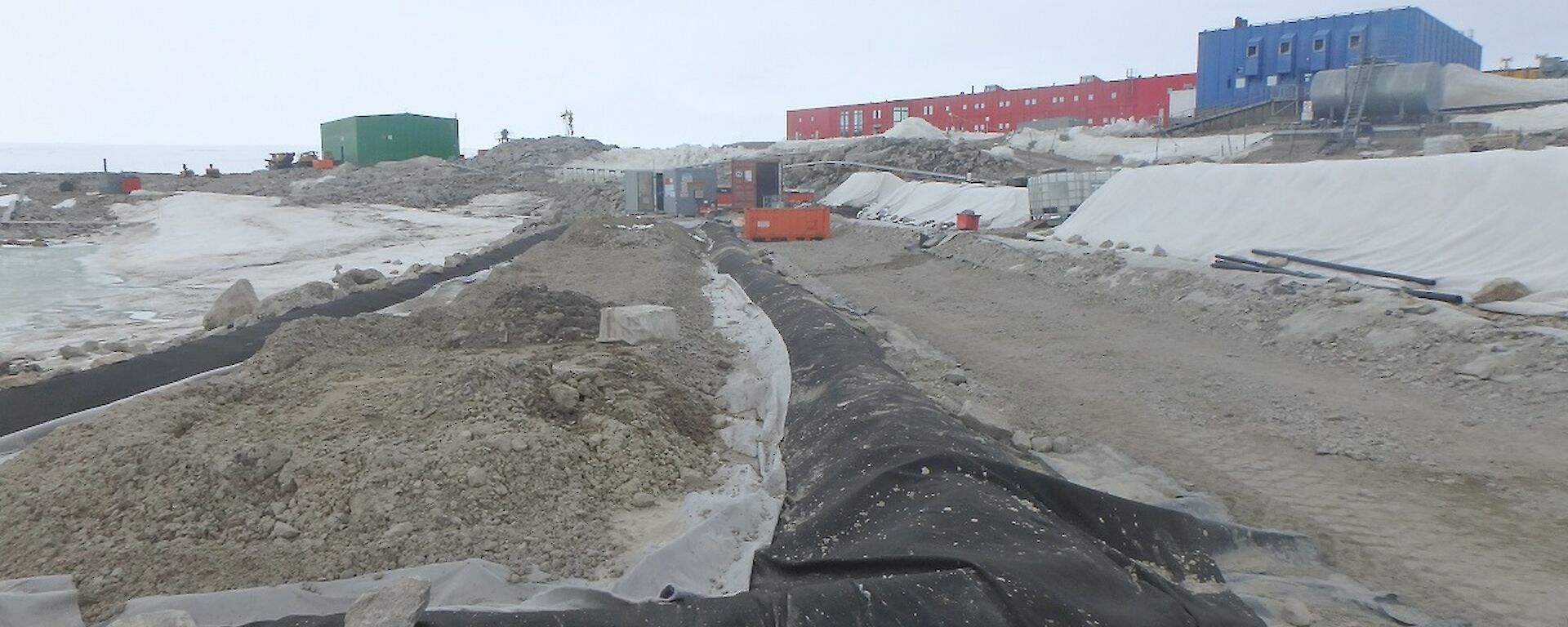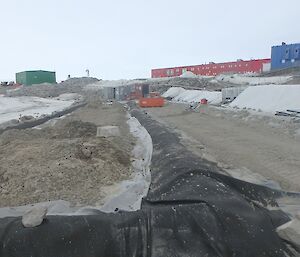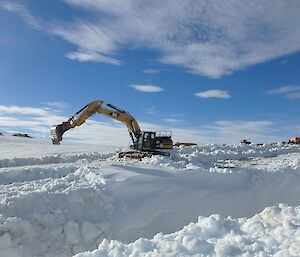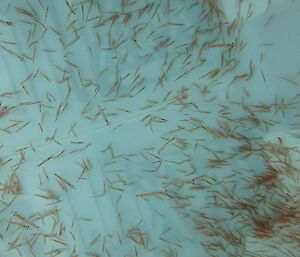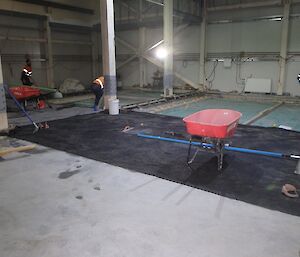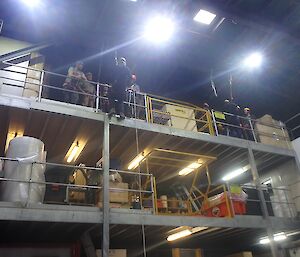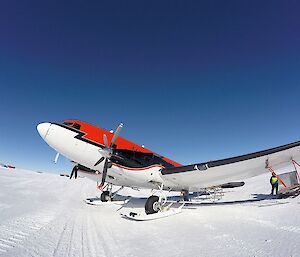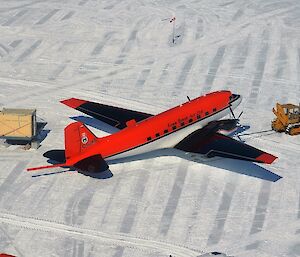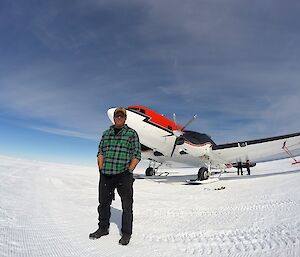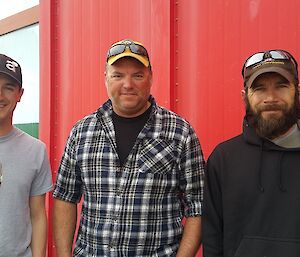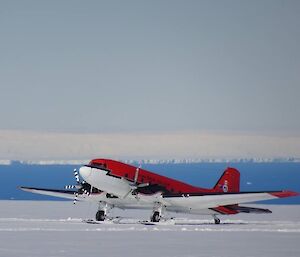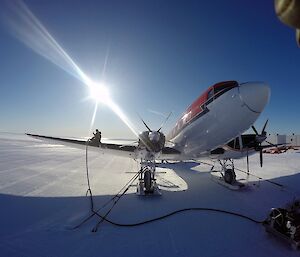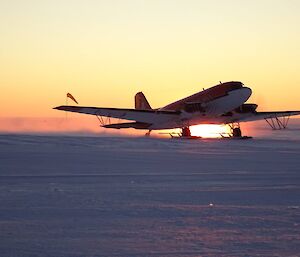This week we’d like to introduce you to JKB and her crew.
JKB is a turbine DC3 aircraft that has quite the celebrity status down here at Casey. She is extremely photogenic and is affectionately known as the workhorse and the ICECAP program mother ship.
She was built in 1942 and flew in WWII – Operation Market Garden. In her current life, JKB belongs to the Borek Air fleet.
Kenn Borek Air Ltd is based in Calgary, Canada and has been heavily involved in Antarctic operations supporting scientific research for the past 32 years.
JKB spends a few weeks every summer working with the Australian Antarctic program. She performs a variety of tasks including scientific survey, airdrop, movement of cargo, passenger transfers and medivacs.
Here are some stats for JKB Turbine DC3:
- Maximum seating — 18 passengers, 2 pilots, 1 engineer
- Maximum payload — 3.85 tonnes
- Operates on wheels and wheel skis
- Maximum range on skis — 10 hours, 2800km
- Cruise speed on skis — 280km per hour
- Twin Pratt and Whitney PT6A — 67R turbines rated at 1424 shaft horsepower each
This summer JKB is travelling with a crew of three Canadians and they have kindly spent the time to answer a few questions for station news.
Jamie Chisholm, DC3 Captain. Moncton, New Brunswick.
What first led you into aviation?
I fell into it by accident. I took electronic engineering in college. In the second year I chose the avionics option. Once I graduated I spent two years working as the avionic technician for the New Brunswick water bombers. That’s when I decided to get my pilots licence. It looked like a pretty cool job and they made a lot more money.
Tell us about JKB!
I’ve flown JKB all over the world. I’ve got a lot of history with her. Of all the Kenn Borek machines I know her the best. Any sound or if something doesn’t feel right I pick it up right away. It’s like she talks to me. She’s never let me down. Flying around the different countries, she attracts a lot of attention.
How did you end up flying in Antarctica?
I was in Calgary doing some contract work for a company I used to work for, flying scheduled service up into the oilfields. After work one day I ran into a bunch of Kenn Borek guys I used to work with at the bar. They told me that they were flying 80 year old vintage airplanes in Antarctica and I said they were nuts. One of the guys there happened to be the boss and he said they were looking for guys, there’s a ground school on Monday and I said I will see you there. I quit my job, threw away my shirt and tie. I’ve been coming to Antarctica ever since. Wearing work boots and plaid.
What do you like about Casey station?
I think I’ve been to about 90% of the stations in Antarctica and Casey is a favourite. It’s almost like coming home. I love the people at Casey, the familiar faces and I have managed to really get to know the people here, more than anywhere else. The support we get here is second to none. From meteorology and communications looking out for us around the clock if need be, to the amazing job the Aircraft Ground Support Officers (AGSOs) do up the hill, the equipment available to us, the operational support is amazing.
Aaron Neyrinck, DC3 Co Pilot. Edmonton, Alberta.
What first led you into aviation?
I’ve been around it my whole life. My grandpa had small planes and was Air Ground Traffic Control in Edmonton. My dad worked at the airport for a time when I was growing up so I was always around the air shows. I just knew it was what I always wanted to do.
How did you end up flying in Antarctica?
I was flying the same style aircraft for a company in northern Canada hauling freight, when they contracted Borek to help out with the summer work. While they were in Yellowknife I got to know some of the crew quite well. I was looking for a change at the time so I called Borek, started a month later and ended up down here.
What do you like about Casey?
Honestly everything! The people are good, the food’s good, the skiway is easy to get to and we always have a Hägg.
Lucius Cirtwell, Aircraft Maintenance Engineer. Grafton, Ontario.
What led you into Aviation?
Well that’s a funny story. I started off wanting to be an electrical engineer. After three years of schooling I decided it didn’t hold any interest for me. My brother Gerald asked me to come work with him one summer, this was 1995, and I enjoyed it. He is an Aircraft Maintenance Engineer as well. I’ve been doing it ever since. It’s a pretty challenging job actually. It allows you to use your hands and your mind. I’ve been very fortunate it’s taken me to lots of interesting places and meet a lot of interesting people.
How did you end up in Antarctica?
When Borek bought the DC3 MKB, at the time it was just Gerald and myself taking care of their Super DC3. It was just part of the job to come to Antarctica to take care of MKB. Gerald came down first with MKB, I came down later. JKB is actually MKB’s sister ship. They are the two we’ve had the longest. During one Antarctic summer we had four family members working on the continent. My brother and his son Colin, myself and my sister’s youngest son Jeffery. The only downside to being in Antarctica is it keeps you from home and family. That’s one of the biggest challenges of this job.
Tell us about JKB!
Let’s see. Poor old J. I’d have to say out of all the DC3s we operate, JKB is one of my favourites. All the DC3s have their own personalities. The better you treat them, the better they take care of you and if you take care of them they will always bring you home. So I’ve worked on JKB in the Antarctic, the Arctic and Greenland, basically doing science and logistics work. As a whole, it’s a very reliable airplane. She’s had a very interesting history, for that matter, all the DC3s have. There really is no end actually to how long she’s going to be able to operate.
What do you like about Casey?
What I like about Casey the most is the people. Everyone is friendly and professional. The station is well run and everybody seems to be in good spirits, which is a sign of having the right people doing the right jobs. When I’m not down here I’m in Europe.
Misty, Senior AGSO

